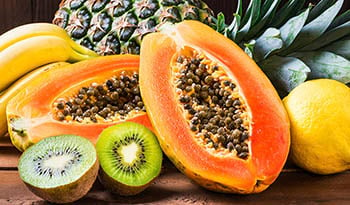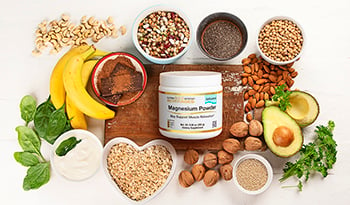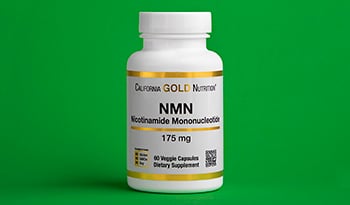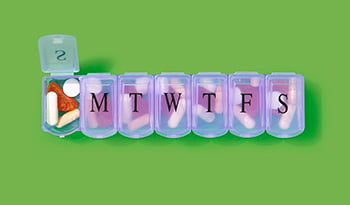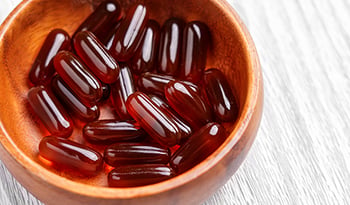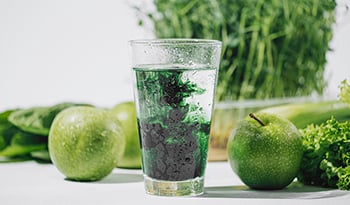Vitamin Cheat Sheet For All 13 Vitamins

Vitamins are essential micronutrients that act primarily as catalysts in the body. They enable numerous biochemical reactions necessary for energy production, immune support, and tissue maintenance. Vitamins also help convert food into energy, regulate cell repair, hormone synthesis, and nerve function, and maintain healthy bones and skin.
You only need vitamins in small amounts. However, since the body either cannot synthesize them at all or produces them in insufficient quantities, vitamins must be obtained through diet or supplementation.
While it’s ideal to meet your body’s vitamin needs by eating a variety of nutrient-dense foods, supplements may benefit individuals with increased nutritional needs, dietary restrictions, or challenges with nutrient absorption. For example, older adults, people with specific diseases, individuals on restrictive diets, and those experiencing chronic stress or hormone changes, such as during pregnancy or menopause, may benefit from supplementation.
Types of Vitamins
Vitamins fall into two broad categories: water-soluble and fat-soluble.
Water-Soluble Vitamins
Water-soluble vitamins include vitamin C and the vitamin B-complex (B1, B2, B3, B5, B6, B7, B9, and B12). These vitamins dissolve in water and are not stored in significant amounts in the body. Excess amounts are eliminated through urine, so regular intake through food or supplements is essential.
Fat-Soluble Vitamins
In contrast, fat-soluble vitamins, which include A, D, E, and K, dissolve in fat and are stored in fatty tissues and the liver. Dietary fat is required for proper absorption of these vitamins, but they don’t need to be consumed as frequently as water-soluble vitamins. Since the body stores fat-soluble vitamins, they pose a higher risk of accumulation and toxicity if overused.
Ultimate Vitamin Cheat Sheet
The human body requires 13 essential vitamins to function properly. Read the list of vitamins below to understand each vitamin’s role in the body and where to find them in your diet.
Vitamin A
Also known as retinol (the active form of vitamin A, which can be used immediately) and beta-carotene (the inactive precursor the body converts into active vitamin A), vitamin A is a fat-soluble nutrient with numerous functions and benefits. It plays a crucial role in vision — especially night vision — and strengthens immunity by maintaining the skin and mucous membranes, your body’s first line of defense against infection. Vitamin A also supports cell growth and differentiation, which are essential for maintaining healthy skin, bones, and teeth, as well as reproductive function and organ development.
The provitamin beta-carotene provides antioxidant support, helping neutralize free radicals and lower oxidative stress. Research suggests vitamin A may help prevent the development of certain cancers and can destroy cancer cells without harming normal cells.
Good Sources of Vitamin A
Preformed vitamin A (retinol) is found in animal-based foods like eggs, dairy, fish, and organ meats. Provitamin A carotenoids are plant pigments found in colorful fruits and vegetables, including carrots, mangos, sweet potatoes, pumpkins, and leafy greens. Research suggests that taking supplemental vitamin A may help reduce the risk of developing age-related macular degeneration in individuals at high risk for the disease.
As a supplement, vitamin A is typically found in multivitamins and standalone supplements as retinyl acetate, retinyl palmitate, or beta-carotene. For optimal absorption, take vitamin A supplements with food.
How Much Vitamin A Do You Need?
Avoid excessive intake — especially of supplemental preformed vitamin A — as it can be toxic and may lead to liver damage, birth defects, or bone loss. The beta-carotene form is safer in higher amounts because the body only converts what is needed. The Recommended Dietary Allowance (RDA) for vitamin A for adults is 700 micrograms daily for women and 900 micrograms for men. The Tolerable Upper Intake Level (UL) for adults is 3,000 micrograms.
Vitamin B1
Also known as thiamin or aneurin (an older term), vitamin B1 is essential for energy metabolism and impacts cell growth, development, and function. It helps transform carbohydrates into energy by aiding the production of adenosine triphosphate (ATP), the “energy currency” of all your cells. Vitamin B1 also supports the nervous system and plays a role in the creation of acetylcholine, a neurotransmitter important for memory, learning, and muscle coordination.
While thiamin deficiency is rare in the United States due to food fortification, low or suboptimal levels, which can impact mood, energy, and metabolism, often go undetected. Older adults and people with poor diets, alcohol dependence, HIV/AIDS, or diabetes have a greater risk of thiamin inadequacy. Certain medications, especially loop diuretics like furosemide (Lasix), can lead to low thiamin levels.
Good Sources of Vitamin B1
Good dietary sources of vitamin B1 include whole grains, pork, fish, legumes (such as black beans), and fortified foods like cereal. You can also take vitamin B1 as a standalone supplement or as part of a multivitamin or B-vitamin complex. A synthetic version of B1 called benfotiamine is also available.
How Much Vitamin B1 Do You Need?
The RDA for thiamin for adults is 1.2 milligrams for men and 1.1 milligrams for women. Women who are pregnant or nursing require slightly more, 1.4 milligrams daily.
Vitamin B2
Vitamin B2, or riboflavin, has numerous benefits and functions, from helping activate other B vitamins to supporting eye health. Riboflavin is a key component of two important coenzymes (FMN and FAD) that help your body generate energy, grow and repair cells, and break down fats, medications, and steroids.
B2 helps your body turn the amino acid tryptophan into niacin (vitamin B3) and activates pyridoxine (vitamin B6). The micronutrient also helps fight free radicals and reduce oxidative stress by helping recycle the antioxidant glutathione. Riboflavin also helps keep homocysteine, an amino acid produced during protein digestion that is associated with inflammation and oxidative stress, in check. Limited research suggests riboflavin supplementation may help prevent migraine headaches.
B2 deficiency is rare in the United States. Groups at highest risk for deficiency include vegetarian athletes and vegans.
Good Sources of Vitamin B2
Good food sources of riboflavin include organ and lean meats, fortified cereals and grains, dairy products, almonds, eggs, and salmon. You can also take vitamin B2 as a standalone supplement or as part of a multivitamin or B-vitamin complex.
How Much Vitamin B2 Do You Need?
The RDA for riboflavin for adults is 1.3 milligrams daily for men and 1.1 milligrams for women. Pregnant and lactating women need slightly more, 1.4 and 1.6 milligrams, respectively.
Vitamin B3
Vitamin B3, also known as niacin, nicotinic acid, and nicotinamide, has many benefits and is essential for energy production and cellular function. Like other B vitamins, it supports metabolism by helping convert food into energy. Over 400 enzymes require niacin’s active form (nicotinamide adenine dinucleotide) to catalyze reactions.
Vitamin B3 helps keep skin healthy, supports the nervous system and brain function, and promotes digestive health. Niacin plays a role in hormone production and DNA repair. Vitamin B3 may also support cardiovascular health by improving circulation, reducing inflammation, increasing HDL (good) cholesterol, and lowering LDL (bad) cholesterol and triglycerides.
Good Sources of Vitamin B3
Good dietary sources include animal foods like beef, beef liver, poultry, salmon, tuna, and pork. Niacin-rich plant-based foods include brown rice, peanuts, fortified breakfast cereals, potatoes, and sunflower seeds.
How Much Vitamin B3 Do You Need?
Most people in the United States meet or exceed the RDA for niacin. As a supplement, niacin can be taken alone or as part of a multivitamin or B-vitamin complex. The RDA for niacin for adults is 16 milligrams of niacin equivalents (NE) daily for men and 14 milligrams NE for women. The recommended intake for pregnant and lactating women is 18 and 17 milligrams NE, respectively. The UL for niacin for adults is 35 milligrams NE daily.
Vitamin B6
Vitamin B6, or pyridoxine, is essential for over 100 enzymatic reactions integral to metabolism, especially those involved in amino acid metabolism, because it helps the body break down and use protein efficiently. Other functions and benefits include supporting brain health (it is involved in the production of several neurotransmitters, including serotonin, dopamine, and GABA) and immune function (it is involved in the production of white blood cells and antibodies).
Pyridoxine may also help prevent anemia by supporting red blood cell formation and cardiovascular disease by helping lower homocysteine levels. Studies suggest that higher intake of B6-rich foods and higher blood levels of B6 are significantly associated with a lower risk of all cancers, especially gastrointestinal cancers. Finally, research suggests supplemental B6 may help reduce morning sickness and premenstrual syndrome (PMS).
Good Sources of Vitamin B6
Good dietary sources of pyridoxine include chickpeas, beef liver, tuna, salmon, chicken breast, turkey, potatoes, bananas, and fortified breakfast cereals. Pyridoxine is also available as a standalone supplement or as part of a multivitamin or B-vitamin complex.
How Much Vitamin B6 Do You Need?
Like the other Bs on the vitamins list, most people in the United States consume the RDA for B6. Those at risk of inadequacy include people with kidney disease, autoimmune conditions, and alcohol dependence. Certain medications, including cycloserine (an antibiotic), antiepileptic drugs like Depakene or Tegretol, and theophylline (an asthma medication), may negatively impact vitamin B6 status.
The RDA for Vitamin B6 for adults is 1.3 milligrams daily. During pregnancy, it goes up to 1.9 milligrams and increases to 2.0 milligrams daily during lactation. The UL for B6 for adults is 100 milligrams.
Vitamin B7
Vitamin B7, also known as biotin or vitamin H, plays an important role in supporting energy metabolism and maintaining healthy hair, skin, and nails, which is why it’s found in beauty supplements. While you only need it in small amounts, B7 is vital to many bodily functions and has several benefits.
Biotin helps produce energy by acting as a coenzyme in the metabolism of carbohydrates, fats, and proteins, turning food into usable fuel. It also supports gene expression, cell signaling, and the regulation of DNA, which essentially tells your cells what to do. During pregnancy, biotin is especially important for embryonic development.
Good Sources of Biotin
Good dietary sources of vitamin B7 include organ meats, cooked eggs, salmon, pork, beef, sweet potatoes, almonds, sunflower seeds, tuna, and spinach. Biotin can be taken as a standalone supplement or as part of a multivitamin, B-vitamin complex, or hair, skin, nail formula.
How Much Biotin Do You Need?
Biotin deficiency is rare. Individuals at risk of biotin inadequacy include people with chronic alcohol use and pregnant or breastfeeding women. The Adequate Intake (AI) for Biotin is 30 micrograms for adults and 35 micrograms for lactating women.
Vitamin B9
Vitamin B9, commonly known as folate (naturally occurring in foods) or folic acid (the synthetic form used in supplements and fortified foods), is essential for DNA and RNA synthesis, cell division, amino acid metabolism, and healthy fetal development (particularly in preventing neural tube defects). Folate is essential for producing neurotransmitters and red blood cells, which help prevent certain types of anemia.
The B vitamin also acts as a coenzyme in the conversion of homocysteine to methionine, a critical biochemical process. Methionine is used to make S-Adenosyl-L-methionine (SAMe), a compound that regulates many cellular functions and supports mood regulation, energy metabolism, detoxification, and immune health.
Some research suggests that consuming enough dietary folate may reduce the risk of certain types of cancers. Additional research suggests folic acid supplementation, alone or with other B vitamins, may reduce stroke risk.
Good Sources of Vitamin B9
Good dietary sources of vitamin B9 include beef liver, spinach, black-eyed peas, fortified breakfast cereals, rice, asparagus, brussels sprouts, dark leafy greens, enriched pasta, avocado, and broccoli. Folate in the form of folic acid can be taken as a standalone supplement or as part of a multivitamin, prenatal vitamin, or B-vitamin complex. Folate supplements interact with several medications, including the cancer drug methotrexate, antiepileptic medications, and sulfasalazine, which inhibits folate absorption.
How Much Folate Do You Need?
Most people in the United States consume enough folate, and folate deficiency is uncommon. Those at risk for folate inadequacy include people with alcohol use disorder, women of childbearing age, pregnant women, and people with malabsorptive disorders (sprue, celiac disease, and IBD) or less stomach acid secretion.
The RDA for dietary folate equivalents (DFEs) is 400 micrograms daily for adults. Pregnant people require 600 micrograms, and those who are lactating require 500 micrograms daily. The UL for folate from supplements and fortified foods is 1,000 micrograms daily.
Vitamin B12
Vitamin B12, also known as cobalamin (it contains the mineral cobalt), is essential for maintaining healthy DNA synthesis, nervous system function, and red blood cell production, helping prevent megaloblastic anemia. Like other B vitamins, cobalamin plays a key role in energy metabolism and facilitates the conversion of food into usable energy. It also benefits cognitive health, especially as we age, by promoting brain function, mood regulation, and memory. In addition, vitamin B12 is important for homocysteine metabolism, which may help reduce cardiovascular disease risk.
Good Sources of Vitamin B12
With a few exceptions (e.g., nutritional yeast, tempeh, and fortified breakfast cereals), vitamin B12 is only found in animal-based foods. Good sources include beef liver (3 ounces provides over 70 milligrams), clams, oysters, salmon, tuna, beef, poultry, and dairy products. Vitamin B12 can be taken as a standalone supplement or as part of a multivitamin or B-vitamin complex, most commonly in the form of cyanocobalamin.
How Much Vitamin B12 Do You Need?
Most people in the United States consume enough vitamin B12. People at risk of vitamin B12 deficiency include vegans, vegetarians who consume some animal products but no meat, individuals with pernicious anemia or GI disorders, and those who have undergone GI surgery. Certain drugs, including gastric acid inhibitors (Prilosec, Zantac, Tagamet) and metformin, can reduce B12 levels in the body.
The RDA for vitamin B12 for adults is 2.4 micrograms daily. Pregnant and lactating women need more — 2.6 micrograms and 2.8 micrograms daily, respectively.
Vitamin C
Vitamin C, also known as ascorbic acid or ascorbate, is a potent antioxidant that protects against oxidative stress by neutralizing free radicals and supporting cellular health. Ascorbic acid plays essential roles in everything from immune function (it supports immune cells and wound healing) and skin health to the synthesis of certain neurotransmitters. It is involved in protein metabolism and the production of collagen, which is essential for connective tissues. Vitamin C also enhances iron absorption and helps regenerate other antioxidants, including vitamin E.
Researchers continue to examine vitamin C’s role as an antioxidant in the prevention of diseases associated with oxidative stress, such as cardiovascular disease and cancer. Consuming at least 200 milligrams of vitamin C daily may help reduce the incidence of colds in individuals with low vitamin C levels, such as older adults, smokers, and those exposed to intense physical exercise or cold environments. Studies suggest taking vitamin C supplements may also reduce the length and severity of a cold.
Good Sources of Vitamin C
Vitamin C is found in fruits and vegetables. Good dietary sources include peppers, oranges, orange juice, grapefruit, grapefruit juice, kiwis, broccoli, strawberries, tomato juice, cantaloupe, cabbage, cauliflower, and potatoes.
Vitamin C is available as a standalone supplement in a variety of forms, including ascorbate, ascorbate with vitamin C metabolites (Ester-C®), liposomal vitamin C, and vitamin C with rose hips. It’s also available combined with other antioxidants called bioflavonoids and as part of a multivitamin.
How Much Vitamin C Do You Need?
Vitamin C deficiency is rare. People at risk of vitamin C inadequacy include smokers and individuals exposed to secondhand smoke, people with limited diets, and those with medical conditions that reduce vitamin C absorption. The RDA for vitamin C for adults is 90 milligrams daily for men and 75 milligrams for women. The RDA for pregnant women is 85 milligrams and 120 milligrams daily during lactation. People who smoke require an additional 35 milligrams of vitamin C daily.
Vitamin D
Vitamin D, also known as calciferol and often referred to as the “sunshine vitamin,” is produced in the skin as vitamin D3 (cholecalciferol) when exposed to sunlight. It has many essential functions and acts more like a hormone than other vitamins on the list.
Vitamin D plays a key role in maintaining calcium balance, which supports bone health and helps prevent osteoporosis. It also helps reduce inflammation and modulates several important processes, including cell growth, neuromuscular function, and glucose metabolism. Additionally, vitamin D may improve mood and protect mental health. A review of 14 observational studies found a strong association between low blood levels of vitamin D and depression.
Good Sources of Vitamin D
Few foods naturally contain vitamin D. Exceptions include fatty fish (trout, salmon, tuna, and mackerel), fish liver oils (especially cod liver oil), and mushrooms exposed to UV light. Some foods, such as milk (cow and plant-based alternatives) and fortified cereals, are enriched with vitamin D and typically provide about 10 to 15% of the Daily Value per serving.
As a supplement, vitamin D is available as D2 (ergocalciferol) and D3 (cholecalciferol). While both are effective, D3 is typically more potent and has a longer-lasting effect in the body. Vitamin D supplements can be taken alone, combined with other nutrients like calcium, magnesium, and vitamin K, or as part of a multivitamin formula.
How Much Vitamin D Do You Need?
Most people in the United States do not consume the recommended amount of vitamin D. Over time, this can result in vitamin D deficiency, especially if individuals don’t get sun exposure. Groups at an increased risk of vitamin D inadequacy include breast-fed infants, older adults, people with dark skin, conditions that impair fat absorption, or obesity, and those who have had gastric bypass surgery. Vitamin D may interact with several kinds of medications, including the weight loss drug orlistat, statins, steroids, and some diuretics.
The RDA for Vitamin D for adults is 15 micrograms or 600 International Units (IU) daily. After age 70, it increases to 20 micrograms (800 IU) daily. Excessive amounts of vitamin D can be toxic, so a UL for vitamin D for adults has been set at 100 micrograms (4,000 IU) per day.
Vitamin E
Vitamin E, also called tocopherol or alpha-tocopherol, has several functions and benefits. It helps support the body’s immune defense — especially as we age — and plays a role in reducing oxidative stress and inflammation. This may help lower the risk of heart disease, cognitive decline, and inflammation-related conditions like rheumatoid arthritis.
Tocopherol is also involved in cell signaling and gene expression and helps protect the skin and eyes from UV damage and age-related changes. When taken alongside other antioxidants like vitamin C, zinc, lutein, and omega-3 fatty acids, research suggests vitamin E may help reduce the risk or slow the progression of age-related macular degeneration (AMD) — particularly in individuals at higher risk.
Good Sources of Vitamin E
Many foods contain vitamin E. Good sources include wheat germ oil, sunflower seeds, almonds, safflower oil, hazelnuts, peanut butter, corn oil, spinach, broccoli, and kiwifruit. Vitamin E can be taken as a standalone supplement (usually in the form of alpha-tocopherol) or in antioxidant or multivitamin formulas.
How Much Vitamin E Do You Need?
Studies suggest Americans don’t consume the RDA for vitamin E. However, deficiency is rare. Populations at risk of vitamin E deficiency include people who don’t absorb fat correctly, such as those with Crohn’s disease or cystic fibrosis.
The RDA is 15 milligrams daily for adult men and women. Lactating women need 19 milligrams per day. High doses from supplements may interfere with normal blood coagulation, so stay below the UL of 1,000 milligrams daily when supplementing with vitamin E.
Vitamin K
Vitamin K, also known as phylloquinone (K1), menaquinone (K2), or menadione (K3, a synthetic form not used in supplements), is best known for its important role in blood clotting. Without enough vitamin K, your body cannot make the proteins required for coagulation, which helps prevent excessive bleeding after injury.
Vitamin K also helps maintain bone health by regulating calcium levels and supporting bone mineralization. In addition, this fat-soluble vitamin may protect the heart by helping prevent calcium build-up in the arteries. Like several other vitamins, it plays a role in regulating inflammation and cell signaling.
Good Sources of Vitamin K
Foods that contain vitamin K include natto (a Japanese fermented soybean product), leafy greens, soybeans, carrot juice, canned pumpkin, blueberries, and pine nuts. Vitamin K, as K1 or K2, is available as a standalone supplement, combined with vitamin D or calcium, or as part of a multivitamin. K2 is often added to bone and cardiovascular support supplements.
How Much Vitamin K Do You Need?
Most adults in the United States consume adequate amounts of vitamin K, and deficiency is rare. People with malabsorption or gastrointestinal (GI) disorders like cystic fibrosis, celiac disease, and ulcerative colitis, or those taking certain medications, may not absorb vitamin K properly. Individuals who have undergone bariatric surgery may require vitamin K supplementation and should have their vitamin K status checked. Certain antibiotics (cefoperazone), cholesterol-lowering medications (cholestyramine and colestipol), and weight loss drugs (Orlistat) may lower vitamin K status.
The AI for vitamin K for adults is 120 micrograms daily for men and 90 micrograms for women. While a UL for vitamin K has not been established, vitamin K can have serious and potentially dangerous interactions with anticoagulants like warfarin. People on these medications must consume the same amount of vitamin K from food and supplements daily so as not to decrease or increase the medications’ anticoagulating effects.
Takeaway
Getting the right amount of all essential vitamins is key to feeling your best, staying healthy, and supporting your mood, immune system, and metabolism. While food is your best source for vitamins, smart, informed supplementation can help ensure you’re covering all your nutrition bases — especially if you’re dealing with medical conditions, dietary restrictions, or absorption issues.
Remember, more isn’t always better, and excess intake of certain vitamins — especially the fat-soluble ones — can be harmful. Before starting any new supplement, consult your healthcare provider to make sure it’s safe for you and won’t interact with other medications you take.
References:
- Kim JA, Jang JH, Lee SY. An Updated Comprehensive Review on Vitamin A and Carotenoids in Breast Cancer: Mechanisms, Genetics, Assessment, Current Evidence, and Future Clinical Implications. Nutrients. 2021 Sep 10;13(9):3162.
- National Institutes of Health, Office of Dietary Supplements. (2022, March 24). Biotin — Health professional fact sheet.
- National Institutes of Health, Office of Dietary Supplements. (2022, March 24). Niacin — Health professional fact sheet.
- National Institutes of Health, Office of Dietary Supplements. (2021). Riboflavin (Vitamin B2) — Fact Sheet for Health Professionals. U.S. Department of Health and Human Services.
- National Institutes of Health, Office of Dietary Supplements. (2021). Thiamin (Vitamin B1) — Fact Sheet for Health Professionals. U.S. Department of Health and Human Services.
- National Institutes of Health, Office of Dietary Supplements. (2022, March 24). Vitamin B6 — Health professional fact sheet.
- National Institutes of Health, Office of Dietary Supplements. (2022, March 29). Vitamin B12 – Health professional fact sheet. U.S. Department of Health and Human Services.
- National Institutes of Health Office of Dietary Supplements. Vitamin D—Health Professional Fact Sheet.
- National Institutes of Health Office of Dietary Supplements. Vitamin E—Health Professional Fact Sheet. Accessed May 30, 2025.
- National Institutes of Health Office of Dietary Supplements. Vitamin K—Health Professional Fact Sheet.
- Singh U, Devaraj S, Jialal I. Vitamin E, oxidative stress, and inflammation. Annu Rev Nutr. 2005;25:151-74.
DISCLAIMER:This Wellness Hub does not intend to provide diagnosis...







































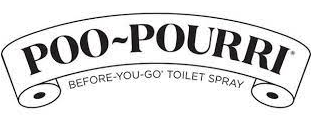




































 Table of Contents
Table of Contents



